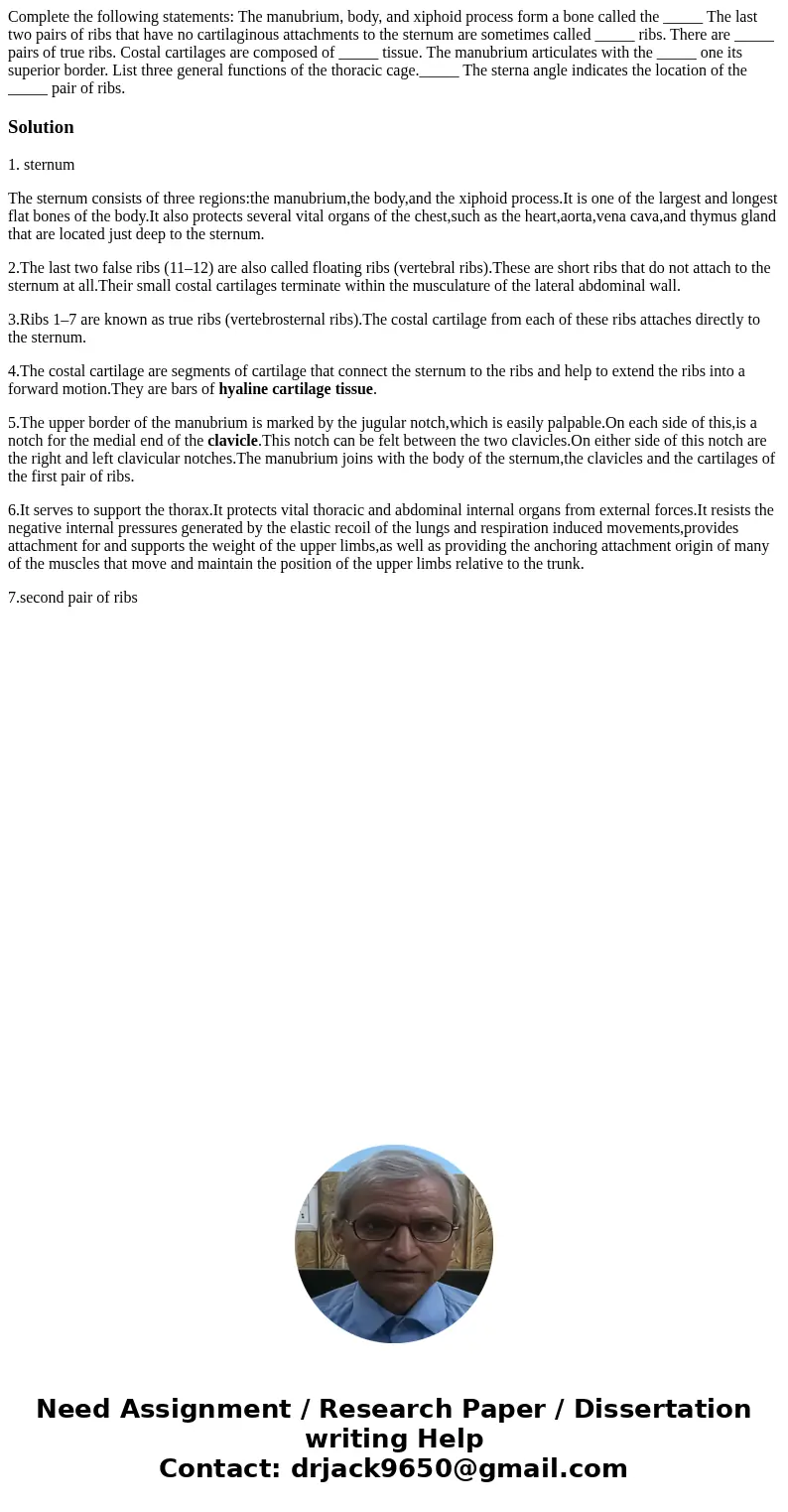Complete the following statements The manubrium body and xip
Solution
1. sternum
The sternum consists of three regions:the manubrium,the body,and the xiphoid process.It is one of the largest and longest flat bones of the body.It also protects several vital organs of the chest,such as the heart,aorta,vena cava,and thymus gland that are located just deep to the sternum.
2.The last two false ribs (11–12) are also called floating ribs (vertebral ribs).These are short ribs that do not attach to the sternum at all.Their small costal cartilages terminate within the musculature of the lateral abdominal wall.
3.Ribs 1–7 are known as true ribs (vertebrosternal ribs).The costal cartilage from each of these ribs attaches directly to the sternum.
4.The costal cartilage are segments of cartilage that connect the sternum to the ribs and help to extend the ribs into a forward motion.They are bars of hyaline cartilage tissue.
5.The upper border of the manubrium is marked by the jugular notch,which is easily palpable.On each side of this,is a notch for the medial end of the clavicle.This notch can be felt between the two clavicles.On either side of this notch are the right and left clavicular notches.The manubrium joins with the body of the sternum,the clavicles and the cartilages of the first pair of ribs.
6.It serves to support the thorax.It protects vital thoracic and abdominal internal organs from external forces.It resists the negative internal pressures generated by the elastic recoil of the lungs and respiration induced movements,provides attachment for and supports the weight of the upper limbs,as well as providing the anchoring attachment origin of many of the muscles that move and maintain the position of the upper limbs relative to the trunk.
7.second pair of ribs

 Homework Sourse
Homework Sourse